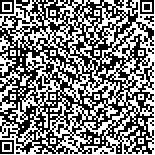赵醇,戴玲丽,冯慧,等.有氧联合抗阻运动对阻塞性睡眠呼吸暂停综合征患者心率及运动能力的影响[J].中华物理医学与康复杂志,2021,43(8):724-728
扫码阅读全文

|
| 有氧联合抗阻运动对阻塞性睡眠呼吸暂停综合征患者心率及运动能力的影响 |
|
| |
| DOI:10.3760/cma.j.issn.0254-1424.2021.08.013 |
| 中文关键词: 有氧运动 抗阻运动 阻塞性睡眠呼吸暂停综合征 心率恢复 运动能力 |
| 英文关键词: Aerobic exercise Resistance training Obstructive sleep apnea syndrome Heart rate recovery Exercise ability |
| 基金项目:国家自然科学基金(81772444) |
|
| 摘要点击次数: 6009 |
| 全文下载次数: 7397 |
| 中文摘要: |
| 目的 探讨个体化有氧联合抗阻运动对中年中重度阻塞性睡眠呼吸暂停综合征(OSAS)患者心率恢复及运动能力的影响。 方法 将40例经多导睡眠监测诊断为患有中重度OSAS的中年患者,按随机数字表法分为观察组和对照组,每组20例。对照组给予常规健康指导及行为能力的培养,观察组在此基础上给予强度为60%~75%峰值功率的有氧训练以及60%~80%最大重复10次所使用重量(10RM)的抗阻训练,有氧运动每次运动时间为30 min,每个项目间或同一项目中可休息5 min,抗阻运动每个训练动作重复8~10次,共3组,每组间可休息5 min;每次联合运动60 min,每周训练3次,共12周。分别于入组时(训练前)及训练12周结束后(训练后),对2组患者进行多导睡眠监测(PSG)及心肺运动试验(CPET),采集患者的睡眠呼吸暂停低通气指数(AHI)、氧减指数(ODI)、最低血氧饱和度(L-SaO2)等PSG评估指标,并记录患者的峰值摄氧量(VO2peak)、峰值功率、无氧阈等运动能力指标以及患者CPET终止后第1、2、3分钟坐位心率恢复数(HRR),记为HRR-1、HRR-2、HRR-3。 结果 训练前2组患者的各项观测指标组间差异均无统计学意义(P>0.05)。①训练后,观察组患者的AHI[(21.19±5.43)次/h]、ODI[(24.36±5.92)次/h]和L-SaO2值[(83.65±5.24)%]与组内训练前[(27.55±6.12)次/h、(30.51±6.75)次/h和(79.26±6.43)%]及对照组训练后[(28.25±6.74)次/h和(29.81±6.53) 次/h和(79.03±6.44)%]比较,均有明显改善(P<0.05)。②训练后,观察组患者的VO2peak[(18.92±3.63) ml/(kg·min)]、峰值功率[(94.18±16.26)W]和无氧阈[(13.10±3.35) ml/(kg·min)]与组内训练前[(15.62±3.87) ml/(kg·min)、[(83.37±13.61)W]和(10.23±2.15) ml/(kg·min)] 及对照组训练后[(15.34±3.45) ml/(kg·min)、[(80.14±14.57)W]和(10.02±3.18)]比较,均有明显提升(P<0.05)。③训练后患者的心率恢复方面,观察组的HRR-1、HRR-2和HRR-3均高于组内训练前及对照组训练后,且差异均有统计学意义(P<0.05)。 结论 有氧联合抗阻运动能明显提高中年中重度OSAS患者的运动能力,并改善其心率恢复。 |
| 英文摘要: |
| Objective To explore the effect of individualized aerobic training combined with resistance training on heart rate recovery and exercise capacity among patients with obstructive sleep apnea syndrome (OSAS) and explore possible mechanisms. Methods Forty middle-aged patients with moderate to severe OSAS were randomly assigned to an observation group (OG, n=20) or a control group (CG, n=20). Both groups were given routine health guidance and motor training, while the OG additionally underwent individualized aerobic exercise training at 60%~75% of their peak power and resistance training loaded at 60%~80% of their ten-times maximum repetition figure. The training was three times a week for 3 months. Both groups underwent cardiopulmonary exercise testing and polysomnography before and after the 12-week intervention. The changes in their sleep apnea hypopnea index (AHI), oxygen desaturation index (ODI) and lowest oxygen saturation (L-SAO2) were collected. Exercise capacity indicators such as peak oxygen uptake (VO2peak), peak power, anaerobic threshold and sitting heart rate recovery (HRR) 1, 2 and 3 minutes after the test were recorded (denoted as HRR-1, HRR-2 and HRR-3). Results There were no significant differences between the two groups in any of the measurements before the intervention. Afterward the average AHI, ODI and L-SAO2 values of the observation group had all improved significantly compared with those before the training and compared with the control group′s values after the training. After the training, the VO2peak and peak power of the observation group had also improved significantly compared with before the training and compared with the control group. HRR-1, HRR-2 and HRR-3 were all significantly higher in the observation group than before the training and higher than the control group′s values after the training. Conclusion Combining aerobic and resistance training can improve the exercise ability and heart rate of middle-aged patients with moderate to severe OSAS, and also reduce the severity of their OSAS to some extent. |
|
查看全文
查看/发表评论 下载PDF阅读器 |
| 关闭 |
|
|
|